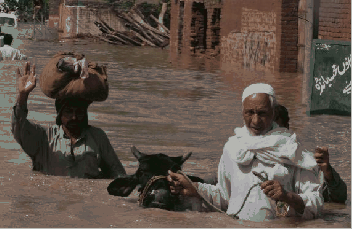 “Time is on my side, yes it is, time is on my side…”
“Time is on my side, yes it is, time is on my side…”
…aah the immortal words of the Rolling Stones’ classic run through my head while I am on the train from London to Newcastle at “OMG it’s early o’ clock” in the morning on Tuesday 23 November.
I hoped to make it in time for the start of the two day Dealing with Disasters Conference at Northumbria University, but unfortunately missed a couple of the opening speeches.
And frankly, when talking about linking disasters and development in the next ten years, time is a luxury we really don’t have. Imagine an exponential rise in the frequency and severity of disasters, coupled with a rising and ageing global population, and you will notice that more older people will live in places more prone to disaster shocks.
This requires swift planning and action.
Linking disasters with development – the next ten years
This session of the Dealing with Disasters Conference series focused on ten years of progress in linking disaster and development and prioritisation for the following ten years. The event brought together people from the academic, practitioner and policy worlds and explored broad themes such as:
- Rights based approaches to disaster reduction
- Beyond resilience
- Health security and wellbeing
- Urban disaster planning and infrastructure
- Disaster communication and associated technology
- Community to community development
Presentations and lively debate ensued, which highlighted two things:
The first is the importance of creating a learning and dialogue space between scientists and practitioners to create a shared language and understanding about pressing disaster risk reduction issues and actions.
The second is the need for applied research to enable actions to become more effective.
The event on the whole was well organised, informative and well attended.
The big questions
However after two days I left with several big questions in my mind and not many answers!
- When we talk about disaster risk, addressing vulnerabilities and increasing resilience, aren’t we really talking about the need to tackle poverty and social injustices? Don’t we need to address imbalances of power and therefore the world needs a new kind of politics and economics to deal with disaster risk reduction in the next 10, 20, 30 years?
- As humanitarian practitioners, how can we stand up for humanitarian principles and maintain humanitarian space better in the light of increasing politicisation of aid?
- When the term security is used more frequently (food security, health security, human security) and can sometimes be conflated with issues of national security, then is this language a help or a hindrance to international cooperation on global issues?
- The challenges of integrating cross-cutting issues such as age, gender and disability into research and practice remain ever present, so how are we (the collective ‘we’) going to crack this nut?
- Vulnerability and capacity are two sides of the disaster risk reduction coin, but who does the labelling and therefore how does this affect perceptions, attitudes, behaviour and power relationships?
Dashing through the snow
I wanted to go on and discuss these questions more with fellow participants over a wee dram of Workie Ticket, but I had to dash through the snow to catch my train home. Phew, I made it.
On board I thought: “I’m not sure I have time to reflect on these questions, but maybe I should make time for it”
….anyone want to join me?
